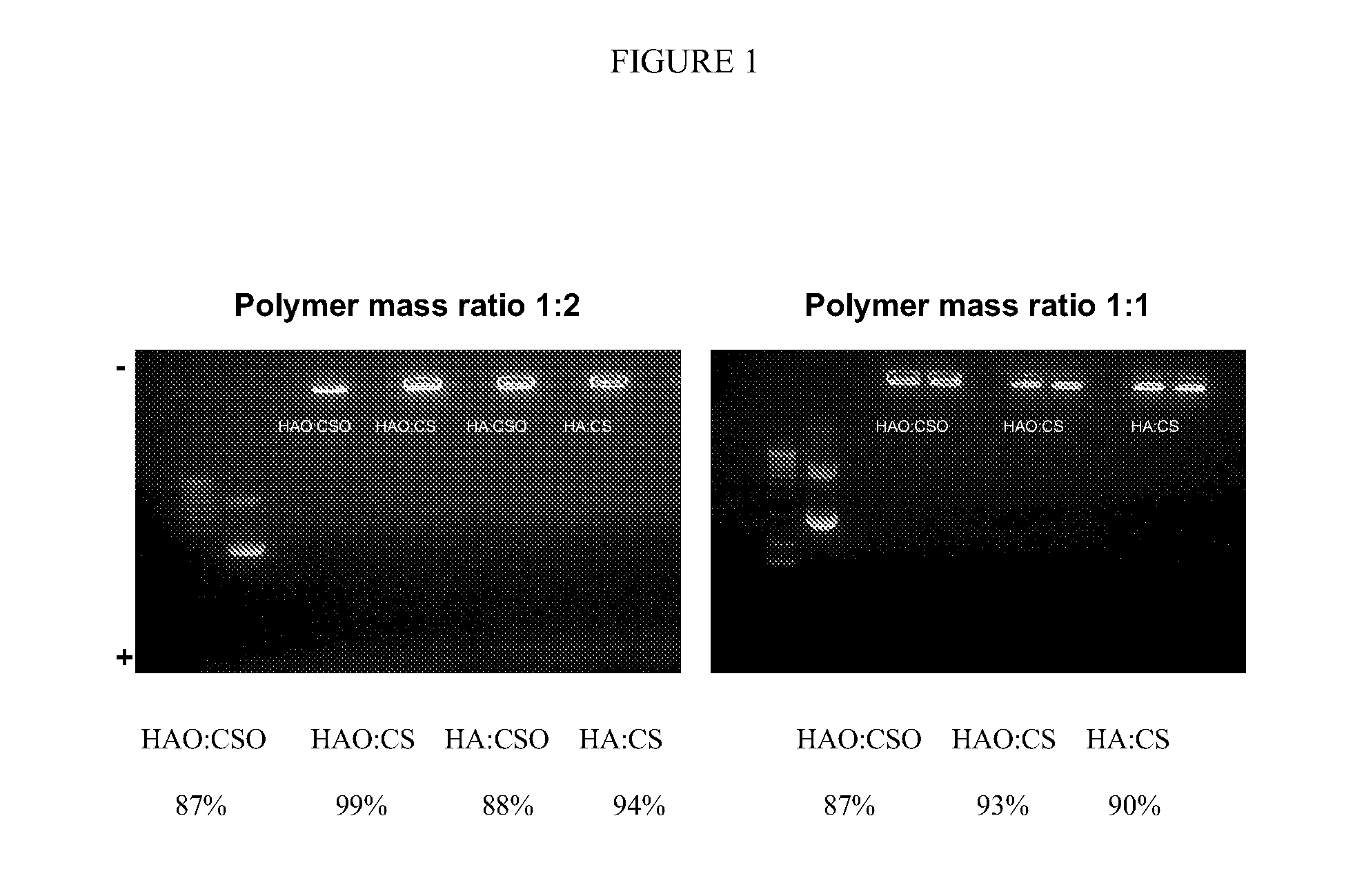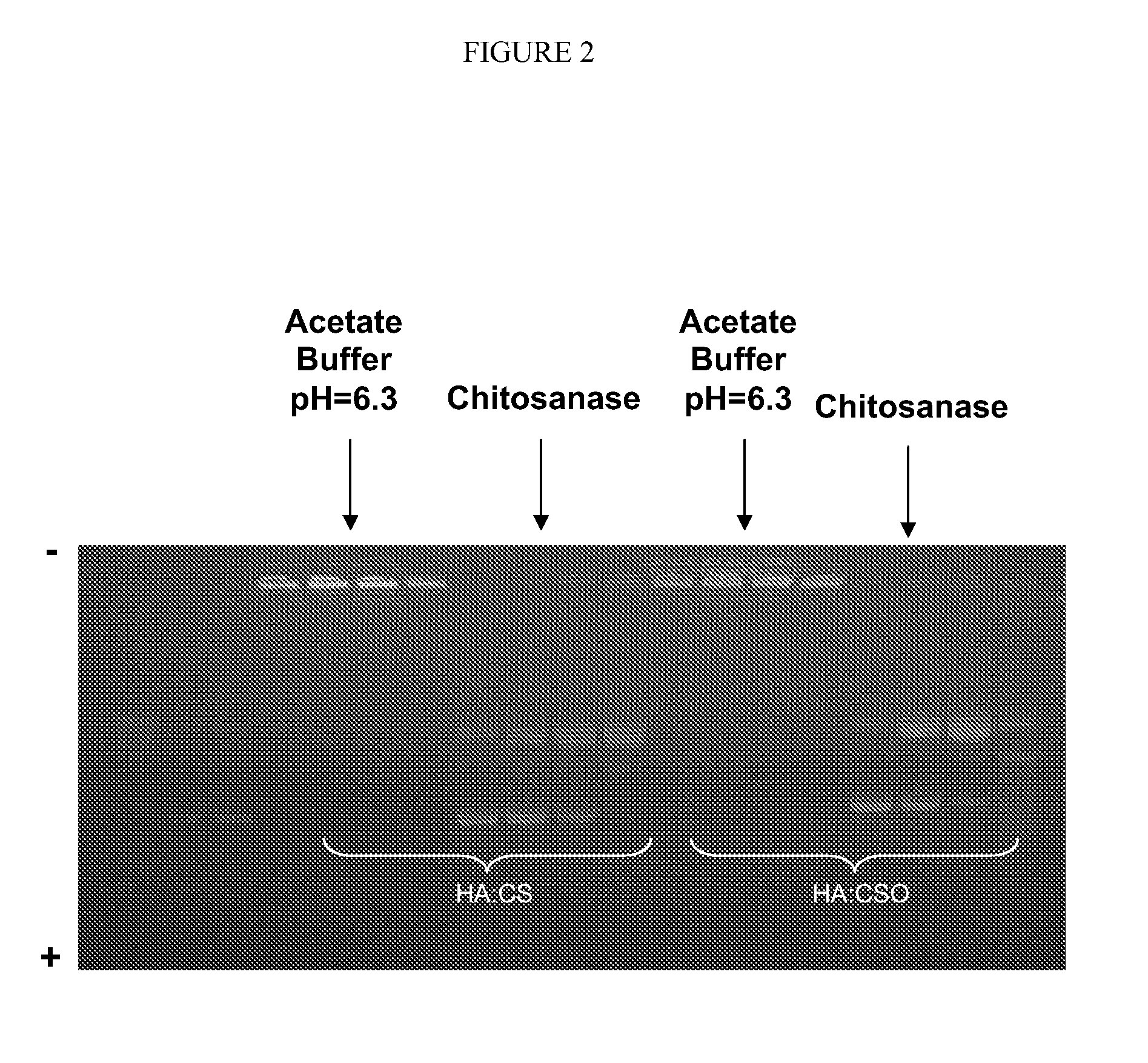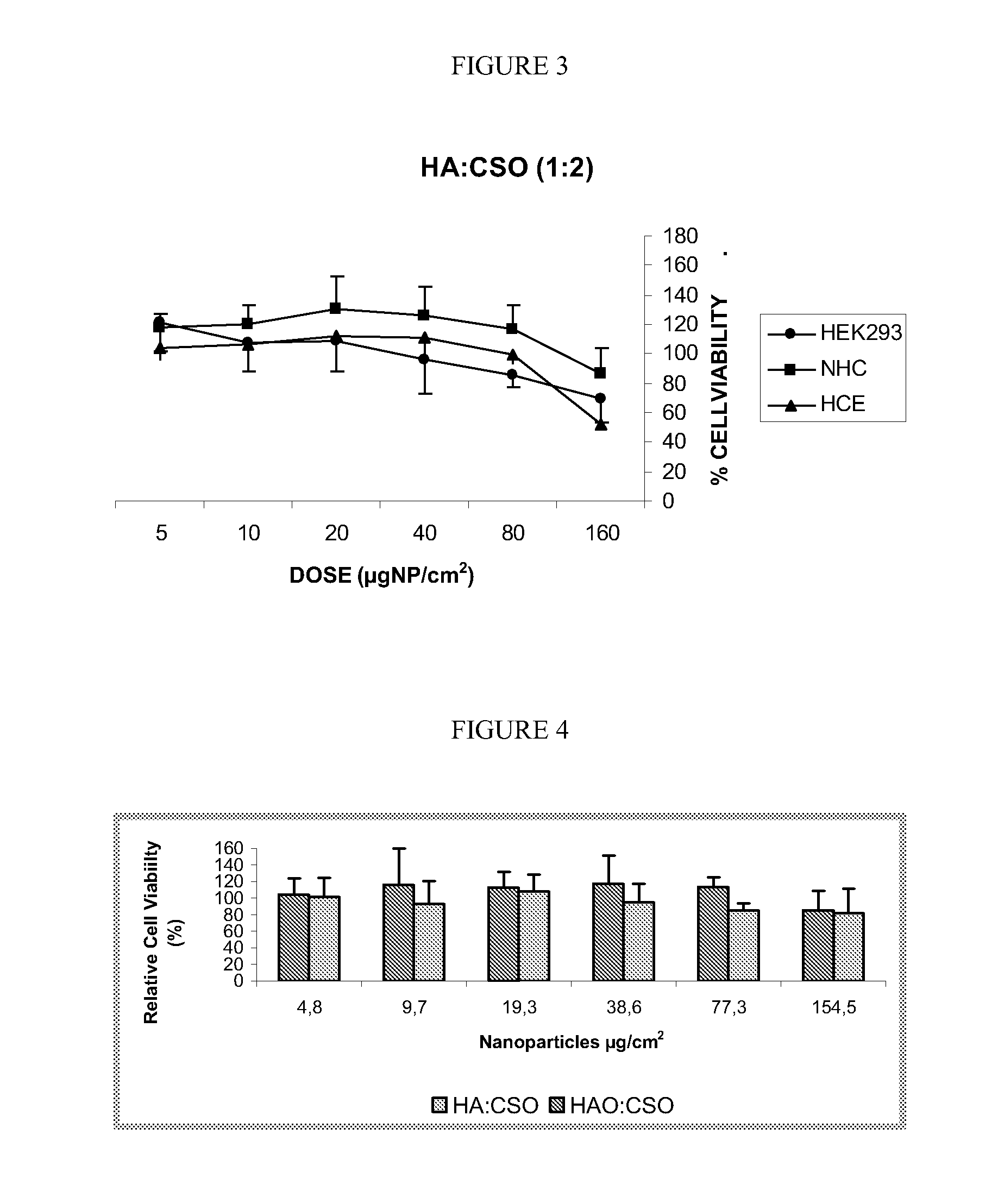Nanoparticles of chitosan and hyaluronan for the administration of active molecules
a technology of nanoparticles and active molecules, applied in the field of nanoparticulate systems, can solve the problems of inability to administer biologically active molecules for therapeutic purposes, inability to fully absorb the active molecules,
- Summary
- Abstract
- Description
- Claims
- Application Information
AI Technical Summary
Benefits of technology
Problems solved by technology
Method used
Image
Examples
example 1
Nanoparticles' Preparation
[0108]Nanoparticles made of chitosan (CSO, with different molecular weights 11, 14, 31, 45 and 70 kDa) and sodium hyaluronate (HA or HAO) in different proportions, with DNA-plasmid (pEGFP, pBgal or pSEAP) incorporated therein, were obtained by the ionotropic gelification process.
[0109]Two aqueous solutions were prepared, one containing 0.625 mg / mL of CSO in milli-Q water and the other containing 0.625 mg / mL of HA or HAO, 0.025 mg / mL of TPP and the corresponding plasmid DNA in a proportion varying from 5 to 20% by weight.
[0110]For the nanoparticles containing a proportion 1:2 of hyaluronate:chitosan, 0.75 ml of the first aqueous solution were mixed with 0.375 ml of the second solution under magnetic stirring, thus obtaining spontaneously the nanoparticles suspended in water.
[0111]For the nanoparticles containing a proportion 1:1 of hyaluronate:chitosan, 0.75 ml of the first aqueous solution were mixed with 0.75 ml of the second solution under magnetic stirri...
example 2
Encapsulation Efficiency Assays and Sustained In Vitro Release
[0115]The nanoparticles obtained according to the procedure described in example 1 (either those containing CSO with 10-12 kDa or CS) were incubated at 37° C. in a buffered medium under stirring for a period enough to permit the release of the plasmid. The released quantity is assessed at different times by electrophoresis gel.
[0116]It was observed (FIG. 1), that no release of plasmid is produced when the nanoparticles are incubated in acetate buffer. Additionally, irrespective of the molecular weight of hyaluronate and the chitosan-hyaluronate weight ratio, nanoparticles show association efficiencies higher than 85%.
[0117]It is also possible to add specific enzymes for the degradation of the polymers constituting the nanoparticles matrix (e.g. chitosanase, 0.105 U enz / 170 μL formulation) in order to degrade the nanoparticulate system and thus facilitating the release of the encapsulated molecule. FIG. 2 shows that after ...
example 3
In Vitro Citotoxicity Analysis
[0118]From the nanoparticles suspensions obtained in example 1, specifically those containing chitosan of low molecular weight of 10-12 kDa, different serially solutions were prepared with the aim of having different nanoparticles concentrations in order to evaluate the cellular viability as a function of the doses.
[0119]This study was performed in three different cell lines:[0120]HEK293 (Human Embrionary Kidney cell line)[0121]HCE (Human Corneal Epithelial cell line)[0122]NHC (Normal Human Conjunctival cell line).
[0123]A MTS assay is performed, wherein the cellular viability is evaluated respect to the 100% (which is considered the culture where only culture medium has been added). The cells must be plated the previous day of the experiments in a quantity of 300.000 cells per well. The culture medium is then taken in and the cell culture washed twice with PBS. After that, the nanoparticles suspension was added to the cell culture and HBSS is added unti...
PUM
| Property | Measurement | Unit |
|---|---|---|
| Size | aaaaa | aaaaa |
| Size | aaaaa | aaaaa |
| Size | aaaaa | aaaaa |
Abstract
Description
Claims
Application Information
 Login to View More
Login to View More - R&D
- Intellectual Property
- Life Sciences
- Materials
- Tech Scout
- Unparalleled Data Quality
- Higher Quality Content
- 60% Fewer Hallucinations
Browse by: Latest US Patents, China's latest patents, Technical Efficacy Thesaurus, Application Domain, Technology Topic, Popular Technical Reports.
© 2025 PatSnap. All rights reserved.Legal|Privacy policy|Modern Slavery Act Transparency Statement|Sitemap|About US| Contact US: help@patsnap.com



